VISION
Canoe Journey
to Alcatraz
On Indigenous Peoples’ Day 2019, canoes representing tribes, communities and families from as far North as Canada and as far West as Hawaii will converge on San Francisco Bay to commemorate the 50th anniversary of the Occupation of Alcatraz and stand in solidarity for peace, prayer, the water, the land, the air, future generations, Indigenous values, inclusion and a diverse humanity.

Julian and Anasazi NoiseCat rest and laugh on the beach during the 2018 Power Paddle to Puyallup.
Photo credit: Ed Archie NoiseCat
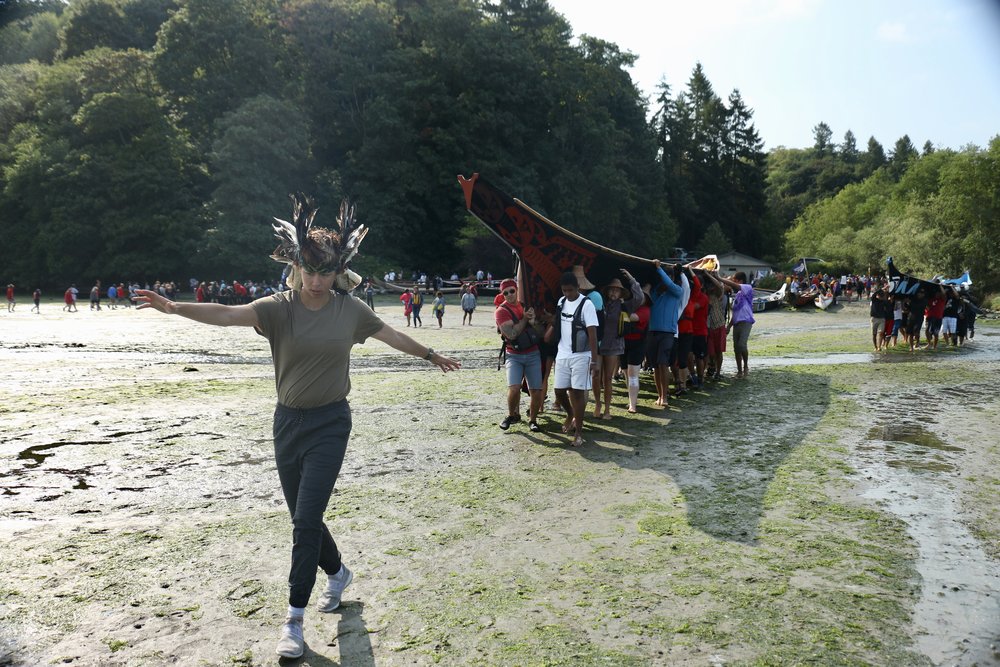
A dancer guides the Spirit of the Raven, out of Suquamish, WA, down to the water on the 2018 Power Paddle to Puyallup.
Photo credit: Julian Brave NoiseCat

The Nokedjak from Squaxin Island in Stz’uminus waters on the 2017 Tribal Canoe Journey.
Photo credit: Julian Brave NoiseCat

Wei Wai Kum council member Curtis Wilson, left, and artist Jonathan Henderson, right, both dressed in thunderbird headdresses, lead their community’s welcoming delegation in Campbell River, the final port-of-call on the 2017 Tribal Canoe Journey.
Photo credit: Julian Brave NoiseCat

A canoe paddles through Stz’uminus waters on the 2017 Tribal Canoe Journey.
Photo credit: Julian Brave NoiseCat

The Squaxin Island canoe family paddles during the annual Tribal Canoe Journey.
Photo credit: Julian Brave NoiseCat
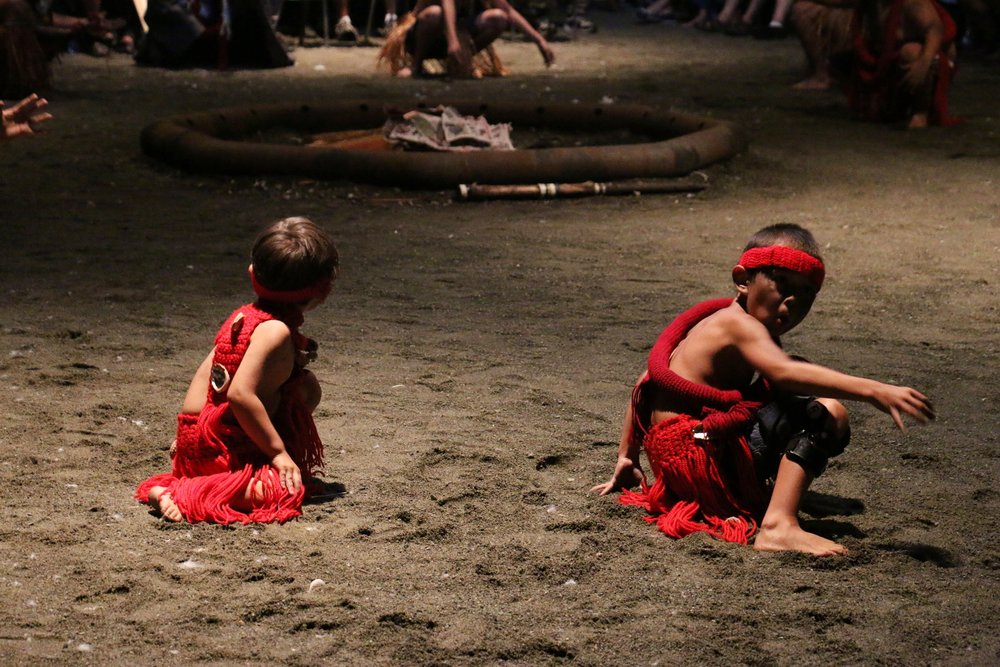
Boys dance fiercest spirits during the Lekwitok people's Red Cedar Bark ceremony on the 2017 Tribal Canoe Journey.
Photo credit: Julian Brave NoiseCat

A canoe representing the Wei Wai Kum Nation led canoes ashore at Tyee Spit near Campbell River, B.C. on the 2017 Tribal Canoe Journey.
Photo credit: Julian Brave NoiseCat

A Kwakwaka'wakw drum group sings canoes into Wei Wai Kum shores on the 2017 Tribal Canoe Journey.
Photo credit: Julian Brave NoiseCat

Canoes pull into Esquimalt and Songhees traditional territory on the 2017 Tribal Canoe Journey.
Photo credit: Julian Brave NoiseCat

Chenae Bullock, left, of the Shinnecock Nation from Long Island, N.Y., was the first guest to share a song and statement on Wei Wai Kum shores, as her canoe family travelled the furthest on the 2017 Tribal Canoe Journey.
Photo credit: Julian Brave NoiseCat
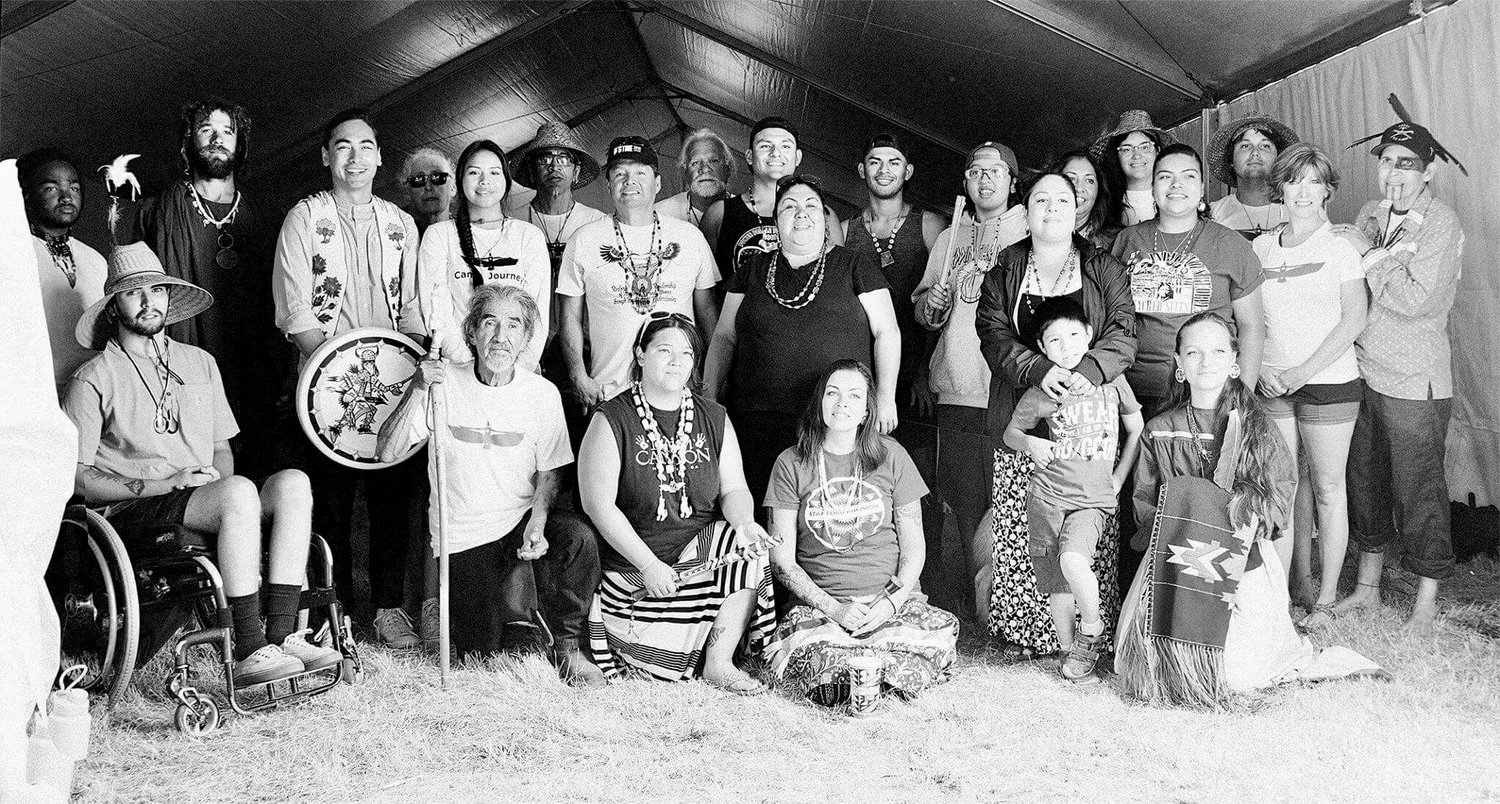
The Occupied Canoe Family out of Oakland, CA partnered with the Paaxmiwoven Canoe Family out of Santa Rosa, CA to host a protocol and giveaway demonstrating the Bay Area’s intention to participate actively in Canoe Journey and potentially serve as 2019 Canoe Journey hosts.
Photo credit: L. Frank Manriquez

Renowned artist Ed Archie NoiseCat sculpted unique pieces to be gifted to dignitaries as part of the Occupied Canoe Family protocol at the 2018 Paddle to Puyallup.
Photo credit: Ed Archie NoiseCat

A canoe paddles in the Salish Sea. Mt. Rainier, known as “Tacoma” in the Lushotseed language is visible in the distance.
Photo credit: Julian Brave NoiseCat

Paddles carved and painted with the Alcatraz Canoe Journey emblem by Ed Archie NoiseCat were gifted to the Squaxin Island Canoe Family for their generous support of our committee.
Photo credit: Julian Brave NoiseCat

Anasazi NoiseCat paddles in the Port of Tacoma. An LNG facility opposed by the Puyallup tribe is visible in the background.
Photo credit: Julian Brave NoiseCat

The Occupied Canoe Family presented gifts carved by Ed Archie NoiseCat to leaders of Indigenous canoe societies societies.
Photo credit: Julian Brave NoiseCat
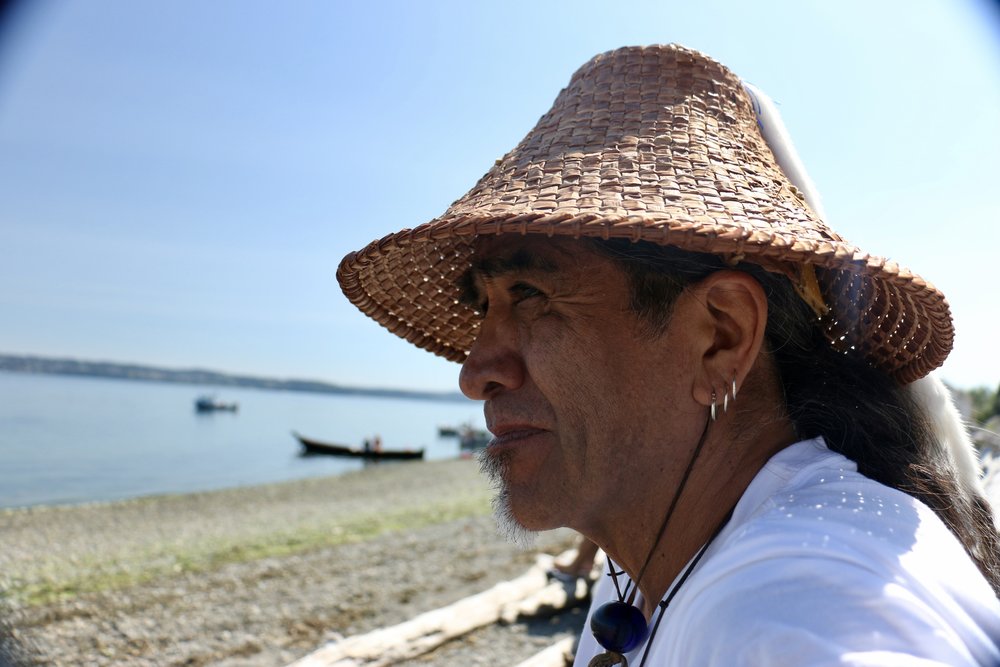
Ed Archie NoiseCat rests on the beach during a long pull on the 2018 Power Paddle to Puyallup.
Photo credit: Julian Brave NoiseCat
2018 PADDLE TO PUYALLUP
Occupied
Canoe Family
At Paddle to Puyallup (2018), the Occupied Canoe Family from Oakland, CA hosted protocols and giveaways to express the Bay Area’s intention to welcome canoes to commemorate the 50th anniversary of the Alcatraz Occupation.

Dancers from K'omoks perform for guests on the grounds of the historical Puntledge Indian reserve in 2017.
Photo credit: Julian Brave NoiseCat

A canoe representing the tribal community of Queets, Washington, arrives in Esquimalt Harbour on July 25, 2017.
Photo credit: Julian Brave NoiseCat

Jake Smith of the Skokomish tribe.
Photo credit: Julian Brave NoiseCat

The Nokedjak canoe from Squaxin Island, Washington, glides through the Salish Sea.
Photo credit: Julian Brave NoiseCat

The Quinault arrive on Stz’uminus shores on the 2017 Tribal Canoe Journey.
Photo credit: Julian Brave NoiseCat
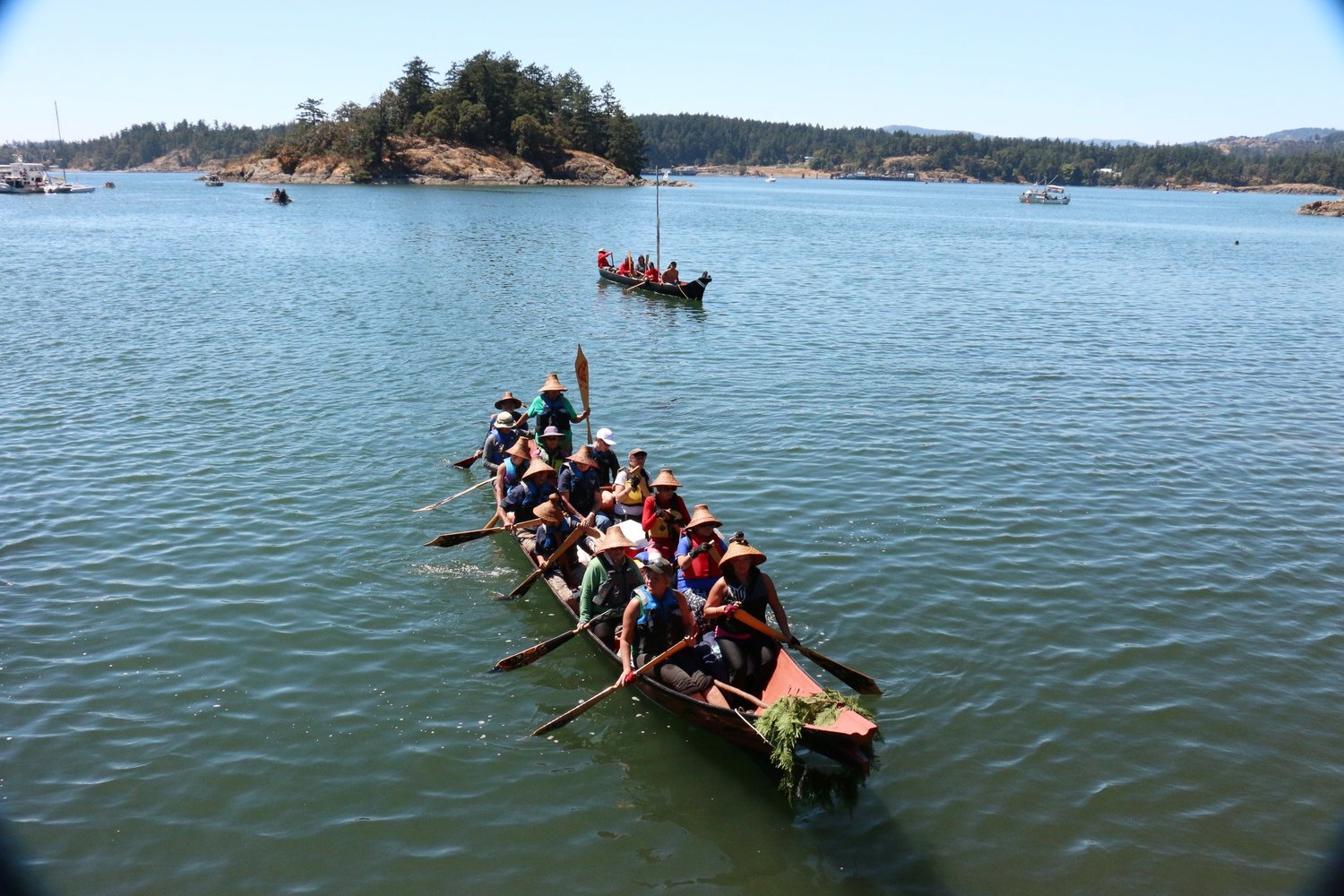
A canoe from the Jamestown Sk'lallam tribe in Esquimalt and Songhees traditional territory on the 2017 Tribal Canoe Journey.
Photo credit: Julian Brave NoiseCat

A Chemainus delegation welcomes canoes ashore on the 2017 Tribal Canoe Journey.
Photo credit: Julian Brave NoiseCat

The K'omoks First Nation received over 50 canoes en route to Campbell River in British Columbia on the 2017 Tribal Canoe Journey.
Photo credit: Julian Brave NoiseCat
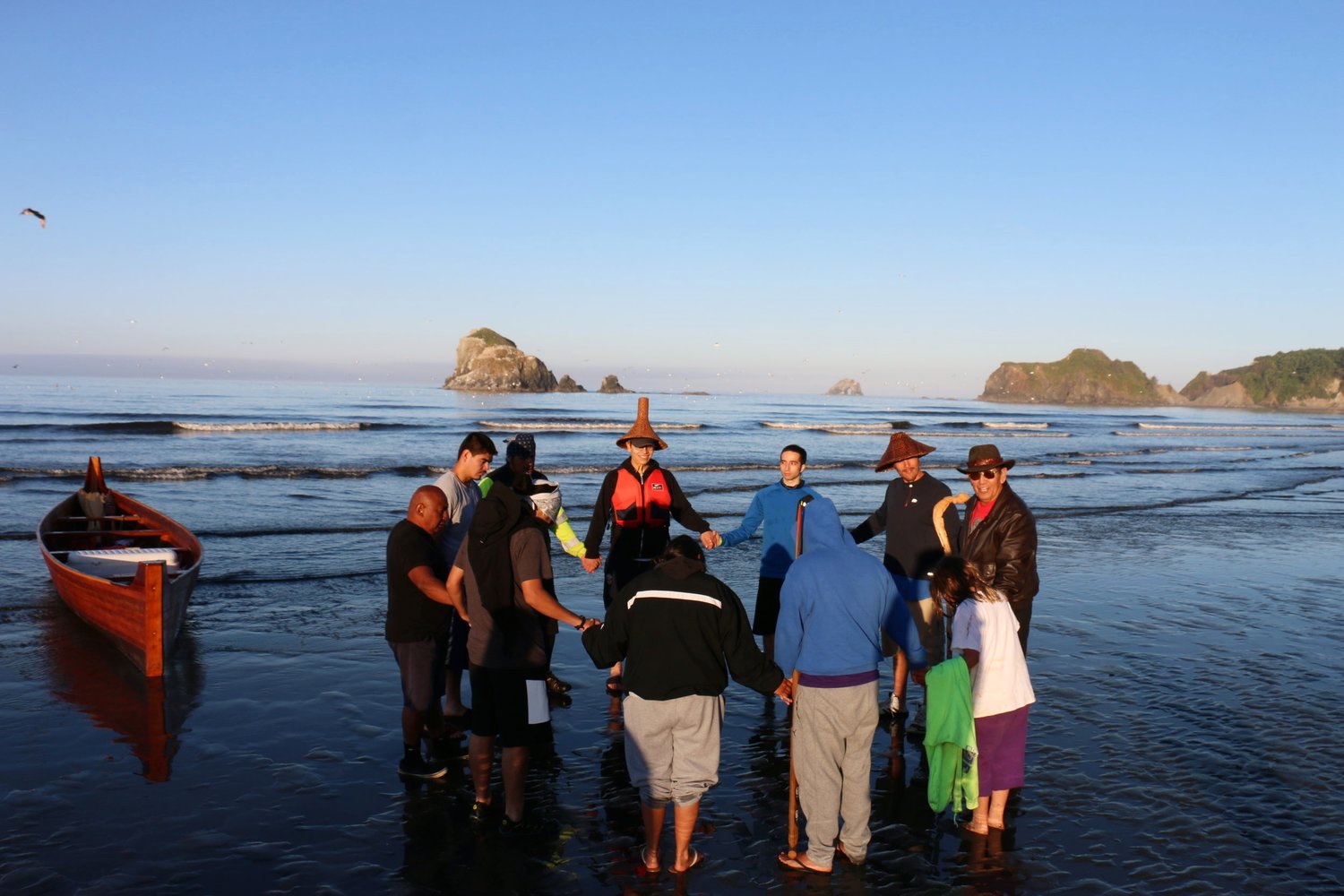
Quinault tribal members prepare to depart on the 2017 journey near Point Grenville, WA.
Photo credit: Julian Brave NoiseCat
tradition
Tribal
Canoe Journey
North America’s fastest growing Native tradition welcomes thousands of people and hundreds of canoes to honor the water, celebrate Indigenous values and work toward a better future.

Indian occupiers moments after the removal from Alcatraz Island on June 11, 1971.
They are (from left): Harold Patty, a Paiute from Nevada; Oohosis, a Cree from Canada; Peggy Lee Ellenwood, a Sioux from Wolf Point, Montana; Sandy Berger, from Fort Hall, Idaho.
Photo credit: Ilka Hartmann

Indian occupiers of Alcatraz waiting to greet new arrivals to the island. Alcatraz Island, March, 1971.
Photo credit: Ilka Hartmann

Exuberant Occupier (left) and Gino (right). Alcatraz Island, California 1971.
Photo credit: Ilka Hartmann

San Francisco, CA. June 11, 1971.
Photo credit: Ilka Hartmann

A group of Indian people at Pier 40 following the June 11, 1971 removal from Alcatraz.
(John Trudell, wearing hat, to the far right of picture)
Photo credit: Ilka Hartmann

The Proclamation was a humorous tongue-in-cheek statement by the local Bay Area Indian community stating why the poor conditions of the island were perfectly suitable for Indians. The bleak and rugged conditions of ‘The Rock’ were strikingly like those on reservations. May 30, 1970.
Photo credit: Ilka Hartmann
history
Alcatraz Occupation
In 1969, Native students and activists occupied the iconic island of Alcatraz, a former federal prison and San Francisco Bay landmark, catalyzing the indigenous rights movement.

“This tiny island would be a symbol of the great lands once ruled by free and noble Indians.”
— INDIANS OF ALL TRIBES










